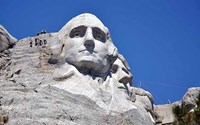- Student Activities (18)
- Lesson Plan (15)
- Other Education Materials (13)
- Teacher Reference Materials (12)
- Distance Learning (2)
- Primary Sources (2)
- Field Schools & Institutes (1)
- Field Trips (1)
- Science Labs (1)
- Teacher Workshops & Other Programs (1)
- Traveling Trunk (1)
- Science (23)
- Math (12)
- Social Studies (11)
- Literacy and Language Arts (4)
Showing 41 results for mount rainier ...
Mount Rainier Institute
- Type: Field Schools & Institutes
- Grade Levels: Middle School: Sixth Grade through Eighth Grade

Mount Rainier Institute provides outstanding nature-based education experiences that are rooted in science and nurture the next generation of environmental stewards and leaders. School overnight programs immerse students in a rich learning environment where they explore the natural world, develop a connection to nature, and build community.
MO Outdoor Rangers
- Type: Student Activities ... Other Education Materials
- Grade Levels: Upper Elementary: Third Grade through Fifth Grade
Soda Bottle Volcano and Mount Rainier
Earth Blocks
- Type: Student Activities
- Grade Levels: High School: Ninth Grade through Twelfth Grade
This activity provides a glimpse into the methods used by geologists as they study the rocky layers at Mount Rainier. Students manipulate "Earth Blocks" into the likely sequences observed at Mount Rainier, and practice their logic skills as they employ the Law of Superposition.
Flood, Fire, and Fury!
- Type: Student Activities
- Grade Levels: Middle School: Sixth Grade through Eighth Grade
Lava Building Blocks
- Type: Lesson Plan
- Grade Levels: Middle School: Sixth Grade through Eighth Grade

Students investigate the influence of magma viscosity on the shape of a volcanic cone. Then, they explore nature and motions of lava flows and learn about the importance of lava flows as the building blocks of Mount Rainier. Students will: How do lava flows influence volcano structure and type, specifically at Mount Rainier, Mount St. Helens, and Kilauea?
Tephra Explorer
- Type: Lesson Plan
- Grade Levels: Middle School: Sixth Grade through Eighth Grade
Students view distribution patterns of tephra layers found around Mount Rainier on an isopach map and discover their source. After this lesson, students will be able to answer the questions: How was tephra dispersed in the Cascade string of Volcanoes and specifically at Mount Rainier?
Living with a Volcano in Your Backyard - Teacher Workshop
- Type: Teacher Workshops & Other Programs
- Grade Levels: Middle School: Sixth Grade through Eighth Grade
Volcano Fan Club
- Type: Science Labs
- Grade Levels: Middle School: Sixth Grade through Eighth Grade
Students simulate tephra transport by placing ingredients in front of running fan, and mapping the resultant layers.
Magma Mash
- Type: Student Activities
- Grade Levels: Middle School: Sixth Grade through Eighth Grade
This activity illustrates how the sizes of mineral grains increase with cooling time. Students role play as minerals that have already formed from elements, and now move within a magma chamber. They “search” for like minerals during short, medium, and long “cooling periods.” Students will also examine similarities and differences in samples or photos of an extrusive rock (andesite) and an intrusive rock (granodiorite), two rock types commonly found at Mount Rainier.
Shoebox Geologist
- Type: Student Activities
- Grade Levels: Middle School: Sixth Grade through Eighth Grade
Lahar in a Jar
A String of Volcanoes
Fire and Ice
- Type: Lesson Plan
- Grade Levels: Middle School: Sixth Grade through Eighth Grade
"Rainy Season in Three Cups" Water: 4-6 Grade
- Type: Lesson Plan
- Grade Levels: Upper Elementary: Third Grade through Fifth Grade
Students will be able to identify the major rock formation types in various national parks.
Leafy Thermometers and Rain Gauges
- Type: Student Activities
- Grade Levels: High School: Ninth Grade through Twelfth Grade

During this six-part activity, students investigate climate and climate change. Using fossil leaves from southwestern Wyoming and modern leaves from their area, students classify leaves, determine mean annual temperature and precipitation using leaf margin and leaf area analysis, analyze climate data (temperature and precipitation), and make statements about climate change.
Geometry at Mount Rushmore
- Type: Student Activities ... Teacher Reference Materials ... Other Education Materials
- Grade Levels: Lower Elementary: Pre-Kindergarten through Second Grade
Mount Rushmore as Scuplture
- Type: Student Activities ... Teacher Reference Materials ... Other Education Materials
- Grade Levels: Middle School: Sixth Grade through Eighth Grade
Preservation at Mount Rushmore
- Type: Student Activities ... Teacher Reference Materials ... Other Education Materials
- Grade Levels: Upper Elementary: Third Grade through Fifth Grade

Learn about the various preservation concerns at Mount Rushmore. By learning to recognize the various types of rocks found in Mount Rushmore and their different characteristics and varying rates of erosion, students will be able to understand the complexity of caring for a monument like Mount Rushmore.










